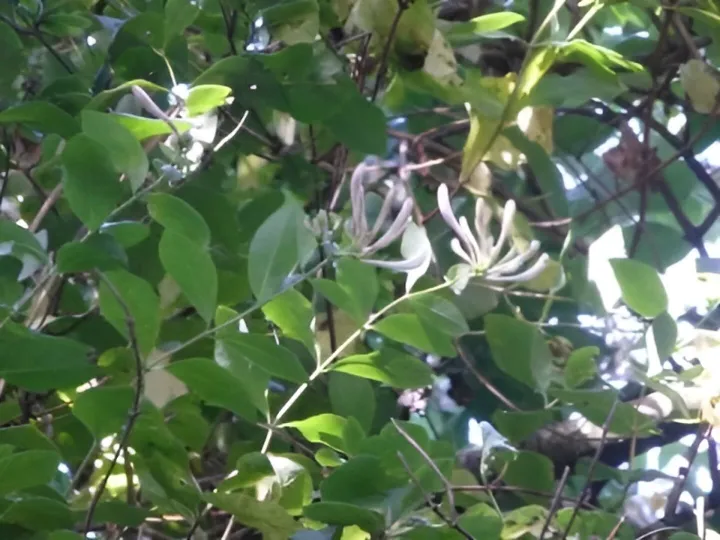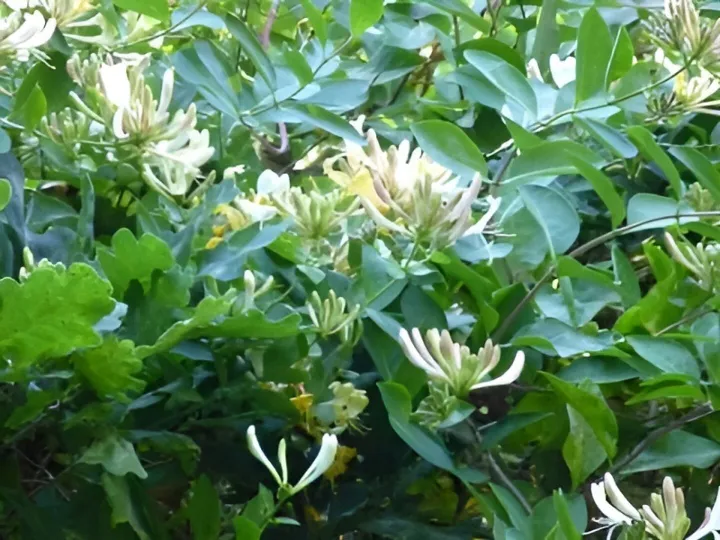During a walk-through woodland or along lanes, especially on warm summer evenings, you may catch the heady perfume of honeysuckle. Honeysuckle is a vigorously twining, climbing shrub that can grow up to 7 metres (23 feet) in woodland and along hedgerows. Its habit is to weave and scramble through available shrubs and trees. The stunningly elegant flowers emit their sweet scent most strongly at night, to attracted pollinating moths. Once pollinated, the red berries begin to develop and, once ripened (in late summer and autumn), they are eaten by birds, including thrushes, warblers and bullfinches. The seeds within the berries can pass unaffected through the birds' digestive systems and are excreted, together with their own little packets of fertilizer. Since this is done where the birds perch, this accounts for honeysuckle arriving in natural or untended hedgerows!
As a long-standing native shrub, it is unsurprising that Shakespeare wrote about honeysuckle. Regrettably, his use of the actual name honeysuckle refers to what we now call Bindweed or Convolvulus, and he gives honeysuckle its old country name – Woodbine.
"I know a bank where the wild thyme blows,
Where oxlips and the nodding violet grows,
Quite over-canopied with luscious woodbine,
With sweet musk-roses and with eglantine."
(A Midsummer Night's Dream, Act 2, Scene 1.)

